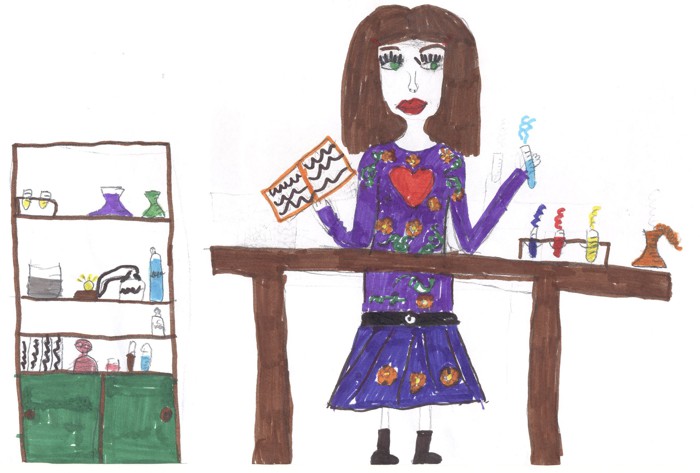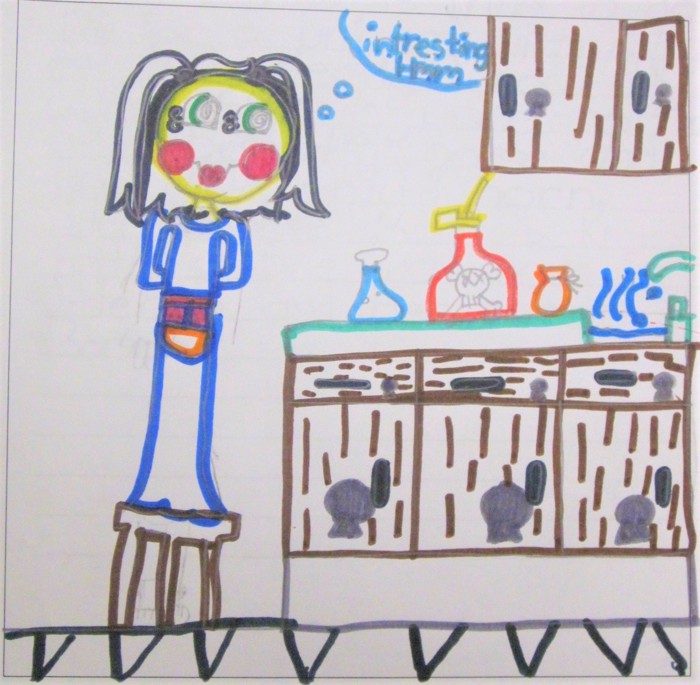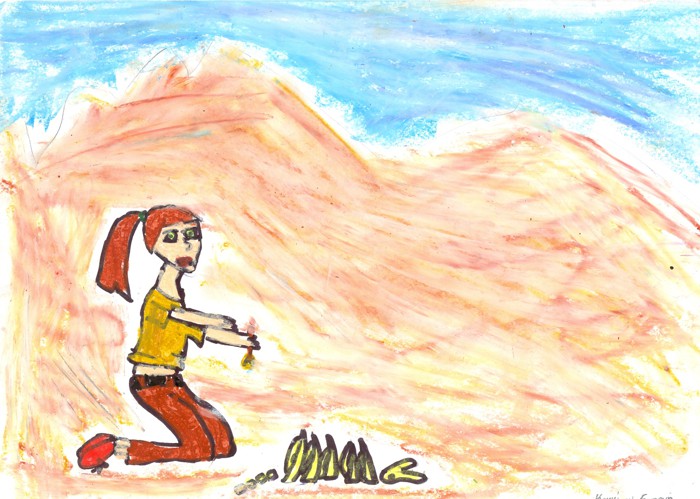Between 1966 and 1977, the social scientist David Chambers asked 4,807 elementary-school children, mostly from Canada and the U.S., to draw a scientist. Their illustrations regularly featured white coats, eyeglasses, lab equipment, and books. Often, the depicted scientists exclaimed things like “I made a discovery!” or simply “Wow!” In one memorable case, a third-grader drew a laboratory with a sign that read: “SIKRIT STUFF FOR SIKRIT ENVINSHUNS—SIKRIT.”
The Draw-a-Scientist Test has become a classic piece of social science, and has been repeated many times over the intervening decades to understand how children perceive scientists. But when David Miller, from Northwestern University, looked at Chambers’ original data, published in 1983, one trend leaped out. Of the almost 5,000 drawings produced within the study, just 28 depicted a female scientist, and all of those were drawn by girls. Not a single boy drew a woman.
“When I describe these results to other researchers, they usually take a pessimistic attitude that maybe things haven’t changed that much,” says Miller. But that’s not true. Miller and his colleagues have now analyzed five decades of data from 78 studies, where more than 20,000 children were collectively asked to draw scientists. And they’ve shown that over that period, children have become more likely to draw women scientists. From the 1980s onwards, on average, 28 percent of children drew female scientists, compared to 0.6 percent in Chambers’ original study.
This makes sense. Since the 1960s, female representation in science has substantially increased. In the U.S., at least, more women are earning science degrees, including 48 percent of chemistry degrees in 2015 compared to just 19 percent in 1966. Female scientists, though still often outnumbered by male peers, more frequently appear in textbooks, magazines, and TV shows aimed at children. “It’s optimistic that children’s stereotypes change as gender roles change in society too,” says Miller.

Still, today’s children are drawing at least twice as many male scientists as female ones. “Twenty-eight percent women scientists is still nowhere close to parity,” says Sapna Cheryan, a researcher from the University of Washington who studies gender disparities in science. She also notes that while the proportion of women in fields like chemistry and biology have risen over the decades, women still get fewer than 20 percent of degrees in computer science, engineering, and physics. “I would be curious what an analysis of a Draw-a-Computer-Scientist or Physicist test would show over time,” she says. “Such an analysis could help us identify which specific fields need the most work in diversifying their representations.”
“Gender stereotypes of scientists not only shape adolescent girls’ and boys’ perceptions of who is a scientist, but also influence their perceptions of who can be a scientist,” says Jocelyn Steinke, from Western Michigan University, who studies media representation of science. They might influence whether female students see a place for themselves in science, and whether they look to scientific careers at all. They might also influence how male students see their female peers, or interact with them in professional settings later on in life.
“Stereotypes can play an important role in constraining children’s beliefs of what they can and cannot do,” adds Toni Schmader, from the University of British Columbia, who studies stereotypes and social identity. “If we can change these representations, young girls might more easily be able to envision a future for themselves in science.”

Miller’s team also found that the gender stereotypes about scientists are stronger among boys than girls. Excluding Chambers’s original study, girls drew female scientists around 45 percent of the time, while boys did so just 5 percent of the time. That’s hardly unexpected: Children usually draw their own gender even when asked to draw a generic person, let alone a scientist.
Still, it’s notable that even girls, as they grow up, become more likely to draw scientists as men. At age 6, girls draw just 70 percent of scientists as women, but this proportion flips around ages 10 to 11 and by 16, they draw around 75 percent of scientists as men. “Middle school is a critical period in which they’re learning this gendered information about what is a scientist,” says Miller.
The Draw-A-Scientist Test has been widely used because it is so easy to administer. But there’s some controversy about what the test actually measures or reveals. Some critics have suggested that perhaps children just draw more men regardless, but Miller says that’s not true. For example, in 2008, one team of researchers showed that elementary-school children drew 66 percent of scientists as men, compared to just 40 percent of vets and 25 percent of teachers. They weren’t putting some universal gender bias onto paper, but instead accurately reflecting the proportion of women and men in various professions.
Other researchers have suggested that students might be drawing what they think a stereotype of a scientist ought to be, and not what they actually think about themselves. But that’s interesting in itself. “I regard Draw-a-Scientist as an indirect measure of children’s beliefs about science,” says Alice Eagly, who is also from Northwestern University and was involved in the new study. “In the long run, stereotypes reflect what people observe in everyday life. They are not myths.”

That goes beyond gender. Across the various Draw-a-Scientist studies, around 79 percent of the illustrated scientists were white, which again could reflect the relative lack of people of color in various fields. But Miller says that this result is difficult to interpret: It’s harder to assign race to a child’s drawing, which also depends on other factors like the colors they’re given to play with.
It’s hard, too, to know how growing social acceptance of non-binary genders might filter into the drawings. A certain proportion of the drawings can’t be clearly described as either male or female, and Miller tells me that, for now, this proportion hasn’t changed.
Bagikan Berita Ini














0 Response to "What We Learn From 50 Years of Kids Drawing Scientists"
Post a Comment